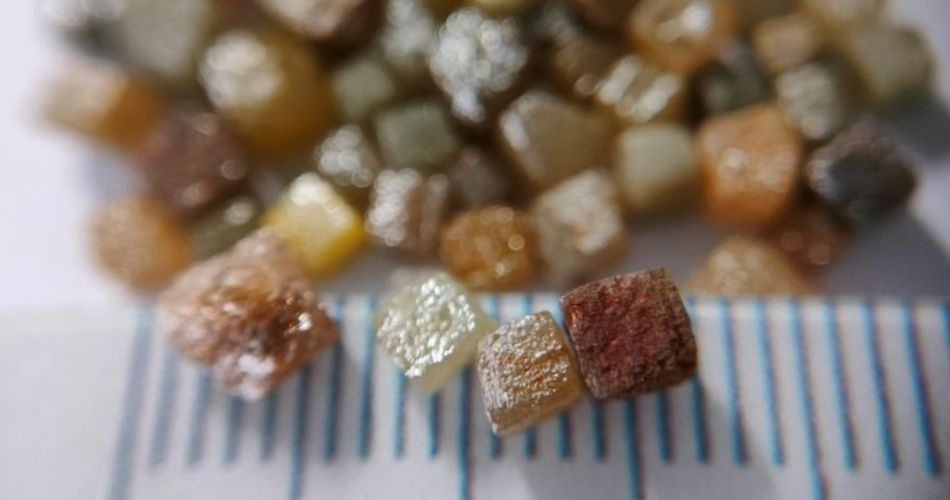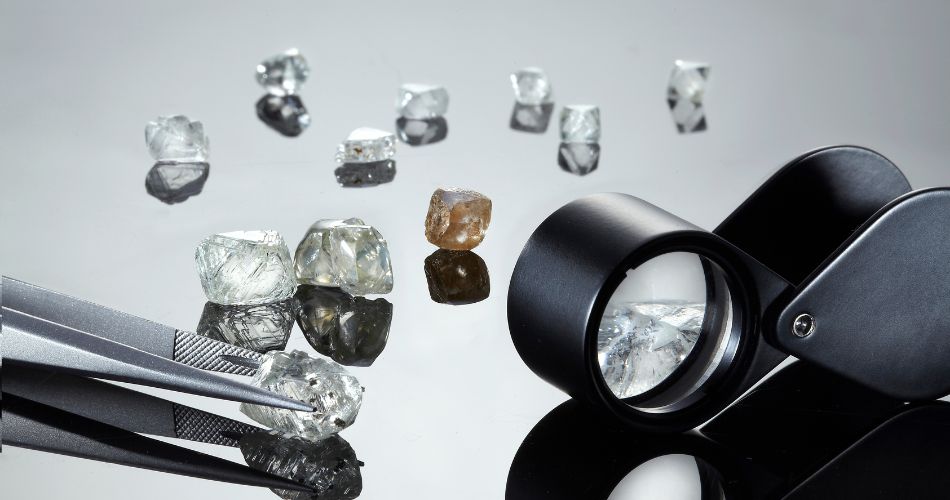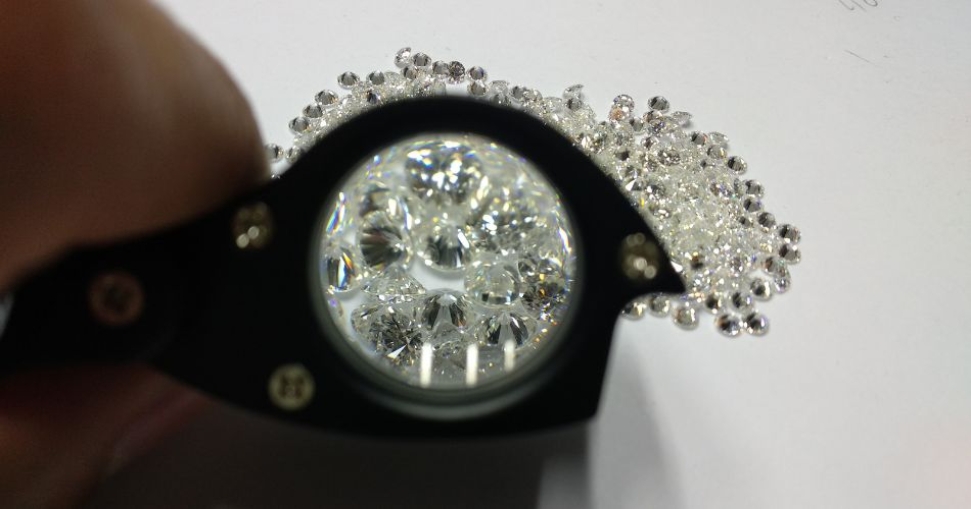Gem diamonds versus industrial quality diamonds. Appearance, purpose, grading, costs
Industrial diamonds and gem-quality diamonds are both made of carbon atoms arranged in a crystal lattice structure, but they differ in their properties, uses, and quality. Here are the key differences between industrial diamonds and gem-quality diamonds:
-
Appearance and Quality:
- Industrial Diamonds: These diamonds are primarily used for industrial purposes, such as cutting, grinding, and drilling. They are not selected for their aesthetic qualities and often have a dull or opaque appearance. Industrial diamonds can be of lower quality in terms of color, clarity, and overall gemological characteristics.
- Gem-Quality Diamonds: These diamonds are valued for their beauty and are used in jewelry. Gem-quality diamonds are assessed based on the "Four Cs": carat weight, cut, color, and clarity. They are carefully graded and can range from colorless to various shades of color. The clarity of gem-quality diamonds is also an important factor, with fewer inclusions or blemishes being considered more valuable.
-
Purpose:
- Industrial Diamonds: These diamonds are predominantly used in various industrial applications due to their hardness. They are employed in cutting tools, grinding wheels, saw blades, and drilling equipment. Their durability and hardness make them suitable for these abrasive and cutting tasks.
- Gem-Quality Diamonds: These diamonds are used in jewelry, including engagement rings, necklaces, earrings, and other ornamental pieces. The brilliance, fire, and overall aesthetic appeal of gem-quality diamonds make them highly sought after for decorative purposes.
-
Grading and Certification:
- Industrial Diamonds: Industrial diamonds are not typically subjected to the same rigorous grading and certification processes as gem-quality diamonds. Their value is more focused on their hardness and suitability for specific industrial applications.
- Gem-Quality Diamonds: Gem-quality diamonds are carefully graded by gemologists using established standards. The Gemological Institute of America (GIA) and other gemological laboratories provide certificates that detail the diamond's characteristics, including carat weight, cut, color, and clarity.
-
Cost:
- Industrial Diamonds: These diamonds are generally less expensive than gem-quality diamonds, as they are valued for their industrial functionality rather than their aesthetic appeal.
- Gem-Quality Diamonds: The cost of gem-quality diamonds can vary widely based on the Four Cs and other factors. High-quality, large, and rare diamonds can command significantly higher prices.

(Picture = Industrial rough diamonds)

(Picture = gem type rough diamonds)

(Picture = Polished diamonds)
Back
